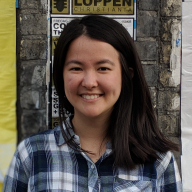
Angelina Li
Bio
Hiya! I work on data stuff at CEA. I used to be the content lead on the EA Global team at CEA, and before that I did economic consulting. Here's an old website I might update at some point.
Think I'm making a mistake? Want to give me feedback? Here's my admonymous. You can also give feedback for me directly to my manager, JP Addison.
Posts 12
Comments145
Quick pushback: overhead is a part of the costs needed to make this product (good management is needed to keep systems running)[1] and ignoring that leads to weird conclusions.
e.g. I think under some versions of your view, if donor A pitches in $50k for a stunner, and then donor B pitches in last $5k, you give donor B all the credit. (Obligatory Nuno ref.) I might be misunderstanding you, apologies if so.
- ^
There's a nearby thing about how "not all overhead costs are necessary program costs" or something, and I probably buy that multiplying by [total costs] / [program specific costs] might not be the right way to apportion overhead.
Good luck with fundraising! :)
One nit: SWP's cost effectiveness numbers don't seem to include any operational overhead in the denominator (see the CEA, where you're only counting the cost of the stunners).
I understand you've fundraised for overhead separately, but IMO it should be best practice to include overhead costs in your denominator — obviously someone would have to cover those costs! Thought came from this thread with Vasco.
I'd be curious for the overhead inclusive costs if that was quick — maybe as a proxy, you can multiply by [total org costs] / [non operational costs]? :)
Edit: I think I was just wrong about this, per Aaron's response here :) Whoops!
Small to medium nit: the costs reported in the SWP CEA you are using as a base don't seem to include operational overhead (e.g. see Aaron's comment that the stunners cost $55k, which is the same as the total cost reported in the CEA).
I understand SWP has fundraised for overhead separately, but IMO it should be best practice to include overhead costs in your denominator — obviously someone has to cover those costs, it's not like they don't exist!
@Greg_Colbourn just out of curiosity, did you end up pursuing this? I'd be interested in hearing how it went, if so — no pressure!
I was so excited to hear about you joining the team, @KarolinaSarek🔸! This is a great update, thank you!

Oh! Well I'm sorry for spreading misinformation :) Thanks for the correction!